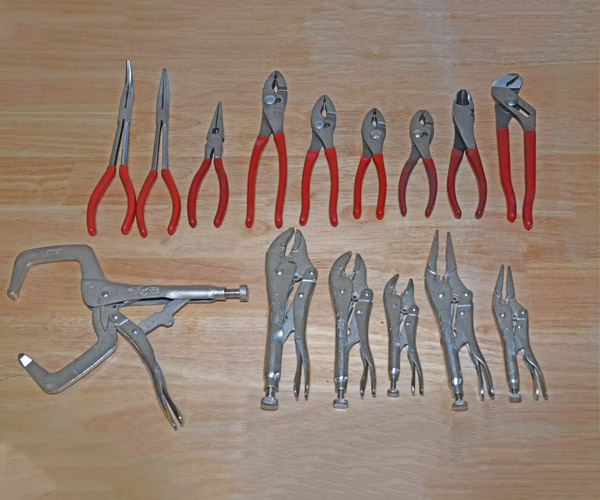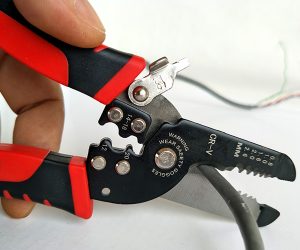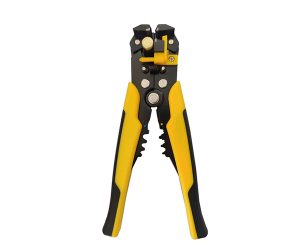Introduction: Why Knowing the Difference Matters
Ever grabbed the wrong tool and struggled through a project? Choosing between locking pliers and regular pliers can make or break your task. Here’s the deal: Understanding their differences ensures you’ll always have the right tool for the job. Whether you’re a DIY enthusiast or a professional, the right pliers can save time, boost efficiency, and even improve safety. This article dives into the key differences between locking and regular pliers, so you’ll know exactly which one fits your needs. Stick around, and by the end, you’ll feel confident choosing the right tool every time.
What Are Pliers? A General Overview
Pliers are versatile hand tools designed to grip, bend, twist, or cut various materials. Their history dates back thousands of years to early blacksmithing, where basic designs helped grip hot metals. Modern pliers have evolved into specialized tools, each tailored to different needs.
At their core, pliers consist of two handles joined by a pivot point, with jaws at one end. These jaws allow users to apply force to objects, making them invaluable for tasks ranging from holding nails to bending wires. You might be wondering: Are all pliers the same? Not at all. Pliers come in various types, each serving a unique purpose.
For instance, needle-nose pliers have long, thin jaws for precise work in tight spaces, while cutting pliers focus on slicing through wires. Slip-joint pliers, on the other hand, offer adjustable jaw sizes for gripping larger objects. In short, pliers are not one-size-fits-all. They are essential tools for tradespeople, mechanics, and hobbyists alike. With so many options available, it’s vital to understand which type suits your needs.
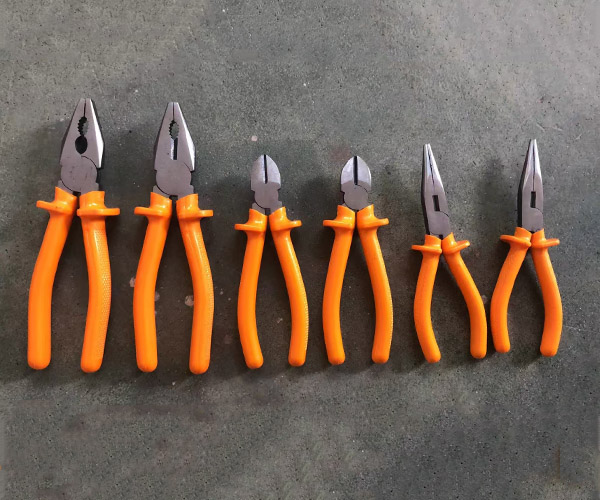
Breaking Down Locking Pliers
Locking pliers, often called “Vise-Grips,” are designed with a unique locking mechanism. Here’s the deal: Unlike regular pliers, locking pliers can grip an object tightly and hold it in place without continuous hand pressure. This makes them ideal for tasks requiring prolonged grip or stability.
Their design includes a screw at the handle’s base to adjust jaw width and a release lever to unlock the grip. Locking pliers excel at gripping rounded or irregular objects, making them indispensable for mechanics, welders, and DIYers. Common uses include clamping materials during welding, loosening stripped bolts, or even serving as a makeshift clamp in woodworking.
However, their versatility doesn’t end there. Locking pliers are also used for bending metal, pulling nails, and gripping stubborn objects that refuse to budge. While their robust build makes them perfect for heavy-duty jobs, they are bulkier than regular pliers. This trade-off between strength and portability is important to consider. In short: Locking pliers are the go-to tool when you need a strong, secure grip that lasts.
Understanding Regular Pliers
Regular pliers are the workhorse of hand tools. Their simple design and ease of use make them a staple in every toolkit. Unlike locking pliers, regular pliers do not have a locking mechanism. Instead, they rely on manual grip strength to hold or manipulate objects.
There are various types of regular pliers, each tailored to specific tasks. Needle-nose pliers are perfect for detailed work in tight spaces, while slip-joint pliers offer adjustable jaws for gripping objects of different sizes. Cutting pliers, as the name suggests, are designed for slicing through wires or small materials. Regular pliers are lightweight, making them ideal for quick, everyday tasks.
However, their simplicity comes with limitations. Regular pliers are less suited for heavy-duty tasks or situations requiring prolonged grip. Still, here’s the thing: They are incredibly versatile. From household repairs to professional electrical work, regular pliers handle a wide range of tasks efficiently. Their affordability and wide availability make them an excellent choice for beginners and seasoned professionals alike.
Key Design Differences Between Locking Pliers and Regular Pliers
When comparing locking pliers to regular pliers, the most obvious difference lies in their design. Locking pliers feature a locking mechanism that allows them to hold objects securely without constant hand pressure. Regular pliers, on the other hand, rely solely on manual grip strength.
Locking pliers are generally larger and heavier, built for heavy-duty tasks. They include an adjustable screw for setting jaw width and a release lever for unlocking the grip. Regular pliers are more straightforward in design, with fixed or slightly adjustable jaws.
Material composition also varies. Locking pliers are often made from high-strength steel to withstand heavy use, while regular pliers may use lighter materials for increased portability. Here’s the kicker: The ergonomic differences also play a role. Locking pliers are bulkier, which can make them less convenient for tight spaces, whereas regular pliers are more compact and easier to maneuver.
Understanding these design differences helps users choose the right tool based on the demands of their project. Whether you prioritize grip strength or ease of handling, knowing these distinctions can save time and effort.
Functionality: How Each Type Works
The way locking and regular pliers function is another critical difference. Locking pliers work by clamping onto an object and locking in place, allowing hands-free operation. This is achieved through the adjustable screw and locking mechanism at the handles. Once locked, the pliers stay firmly in position until the release lever is engaged.
Regular pliers, however, operate without any locking mechanism. Users must maintain constant pressure to keep the jaws gripping an object. While this may seem like a drawback, it allows for more precise control in tasks requiring intricate movements.
Locking pliers excel in tasks that demand a stable grip, such as welding or loosening rusted bolts. Regular pliers shine in situations requiring versatility and quick adjustments. In essence: Each tool’s functionality is tailored to specific needs, making them complementary rather than interchangeable.
Advantages of Locking Pliers
Locking pliers offer several advantages that set them apart from regular pliers. Their ability to lock onto objects provides unmatched grip strength, making them ideal for demanding tasks. This hands-free capability is a game-changer for professionals working on intricate projects like welding or metalwork.
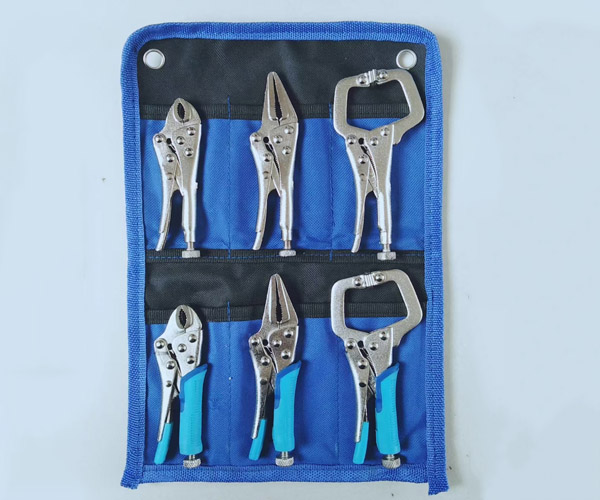
Another key advantage is their versatility. Locking pliers can double as clamps, vices, or even wrenches in certain situations. Their adjustable jaw pressure allows them to grip objects of varying sizes, from small wires to large pipes. This adaptability makes them a favorite among mechanics, carpenters, and DIY enthusiasts.
However, their greatest strength lies in their reliability. Once locked, these pliers hold objects firmly, freeing your hands for other tasks. This reduces strain and improves efficiency. The bottom line: Locking pliers are a must-have for any toolkit, offering strength, versatility, and convenience in one package.
Advantages of Regular Pliers
Regular pliers are prized for their simplicity and versatility. They are lightweight, easy to use, and suitable for a wide range of tasks. Unlike locking pliers, they do not require adjustments before use, making them a go-to tool for quick fixes and everyday projects.
Their compact design allows for greater precision, especially in tight spaces. For instance, needle-nose pliers can reach into confined areas where bulkier tools cannot. Regular pliers are also more affordable, making them accessible to beginners and professionals alike.
Another advantage is their variety. With specialized designs like cutting pliers, slip-joint pliers, and lineman’s pliers, they cater to specific needs effectively. In short: Regular pliers are a versatile, cost-effective option for anyone seeking a reliable tool for general use.
Limitations of Locking Pliers
While locking pliers offer impressive functionality, they come with certain limitations. One of the most notable drawbacks is their bulkiness. Locking pliers are typically larger and heavier than regular pliers, making them less convenient for tight spaces or tasks requiring precision. Their robust build, while an asset for heavy-duty work, can make them cumbersome in situations where agility and finesse are needed.
Another limitation is their complexity. Locking pliers require users to adjust the jaw size using the screw mechanism before use. This can be time-consuming, especially if you need to work quickly or handle multiple objects of varying sizes. Here’s the catch: While locking pliers provide a strong grip, the pressure they exert can damage delicate materials. This makes them unsuitable for tasks involving softer or more fragile objects.
Lastly, locking pliers are generally more expensive than regular pliers. Their advanced mechanism and durable construction contribute to the higher cost. For casual users or those with a limited budget, this may be a consideration. Despite these drawbacks, locking pliers remain a powerful tool for specific applications, but they may not be the best choice for every scenario.
Limitations of Regular Pliers
Regular pliers, while versatile, have their own set of limitations. The absence of a locking mechanism means users must continuously apply pressure to maintain their grip. Over extended periods, this can lead to hand fatigue, especially during demanding tasks. You might be wondering: Does this make regular pliers less useful? Not necessarily, but it does limit their effectiveness for heavy-duty jobs.
Another limitation is their grip strength. Unlike locking pliers, regular pliers cannot securely hold objects without constant hand force. This makes them less suitable for tasks requiring prolonged grip or high stability, such as welding or clamping materials together. Additionally, regular pliers are not designed for specialized functions like removing stripped bolts or acting as temporary clamps.
Their lightweight design, while advantageous for portability and precision, can make them less durable in comparison to locking pliers. They are prone to wear and tear when subjected to heavy or repetitive use. The takeaway: Regular pliers are best for light to moderate tasks, but their capabilities fall short in situations requiring superior grip strength and durability.
Common Use Cases for Locking Pliers
Locking pliers are indispensable for tasks requiring a strong, stable grip. One of their most common uses is securing materials during welding or soldering. Their ability to lock in place allows users to focus on their work without worrying about slippage. Think about it: This hands-free functionality can be a lifesaver in high-precision tasks.
Another popular application is removing stripped or rusted bolts. The adjustable jaw and locking mechanism provide the necessary grip to tackle stubborn fasteners that regular pliers cannot handle. Locking pliers also excel in gripping irregularly shaped objects, such as pipes or rounded surfaces, making them a favorite among plumbers and mechanics.
In woodworking, locking pliers can function as temporary clamps, holding pieces of wood together while glue dries or cuts are made. Their versatility extends to household repairs, where they can be used to loosen stuck jar lids, tighten screws, or even bend metal. In short: Locking pliers are the go-to tool for tasks demanding grip strength, stability, and versatility.
Common Use Cases for Regular Pliers
Regular pliers are ideal for everyday tasks that require precision and quick adjustments. One of their primary uses is in electrical work, where they are used to grip, bend, or cut wires. Needle-nose pliers, a subtype of regular pliers, are particularly useful for accessing tight spaces, such as junction boxes or circuit boards.
DIY enthusiasts often rely on regular pliers for small household repairs. From pulling nails to twisting wires, their straightforward design makes them a versatile tool for a wide range of projects. Here’s an example: Slip-joint pliers can adjust to grip objects of varying sizes, making them suitable for plumbing repairs or assembling furniture.
Regular pliers are also a favorite for craft projects, where precision and control are essential. They can be used to create wire loops for jewelry making or to hold small components in place. Their lightweight and ergonomic design make them easy to handle, even for extended periods. The bottom line: Regular pliers are a versatile and affordable option for light to moderate tasks.
How to Choose the Right Tool for Your Needs
Choosing between locking pliers and regular pliers depends on the nature of your task. If you’re working on a heavy-duty project that requires a stable grip, locking pliers are the obvious choice. Their ability to lock onto objects provides unmatched strength and stability, making them indispensable for welding, automotive repairs, or loosening rusted bolts.
On the other hand, regular pliers are better suited for quick, light-duty tasks. Their simple design and ease of use make them ideal for electrical work, crafting, or small household repairs. Ask yourself: Do you need precision or power? For intricate work requiring delicate handling, regular pliers are the better option. For projects demanding force and grip strength, locking pliers come out on top.
Budget is another factor to consider. Locking pliers are typically more expensive but offer greater versatility and durability. Regular pliers are more affordable and widely available, making them a great starting point for beginners. Ultimately: Assess your needs, project requirements, and budget to determine which tool will serve you best.
Maintenance Tips for Both Locking and Regular Pliers
Proper maintenance is essential to ensure the longevity of your tools. For locking pliers, start by cleaning them after each use. Wipe away dirt, grease, or debris with a clean cloth and apply a light coat of oil to prevent rust. Regularly check the adjustment screw and locking mechanism for signs of wear or damage.
For regular pliers, clean the jaws and pivot point to remove any residue. Apply lubricant to the pivot to maintain smooth operation. Store your pliers in a dry place to avoid corrosion, and consider using a toolbox or storage rack to keep them organized. Here’s a pro tip: Inspect your tools periodically for cracks, dents, or other signs of wear. Replace damaged tools to ensure safety and efficiency.
Both types of pliers benefit from proper storage and regular maintenance. Taking the time to care for your tools not only extends their lifespan but also ensures they perform optimally when needed. Remember: Well-maintained tools are safer, more reliable, and more enjoyable to use.
Frequently Asked Questions
What makes locking pliers more expensive than regular pliers? Locking pliers have a more complex mechanism, including an adjustable screw and locking feature, which increases manufacturing costs.
Can regular pliers be used as a substitute for locking pliers? In some cases, yes, but they lack the grip strength and stability provided by locking pliers, making them less effective for heavy-duty tasks.
How do I adjust the jaw size on locking pliers? Use the screw at the base of the handle to adjust the jaw size. Turn it clockwise to tighten and counterclockwise to loosen.
Are locking pliers suitable for beginners? Absolutely! They are easy to use once you understand how to adjust and release the grip.
Which type is better for automotive or woodworking tasks? Locking pliers are better for automotive tasks requiring grip strength, while regular pliers are more suitable for woodworking that demands precision.
Conclusion: Choosing the Right Tool for Your Projects
Understanding the differences between locking pliers and regular pliers ensures you always have the right tool for the job. Each type serves a unique purpose, whether it’s locking pliers for heavy-duty tasks or regular pliers for everyday precision work. The key takeaway: Equip yourself with the tools that align with your needs for efficiency, safety, and convenience.
Looking to take your projects to the next level with high-quality, durable tools? At Kolarwin Tools, we specialize in customized hand tools tailored to your brand’s unique requirements. Whether you’re a distributor, retailer, or wholesaler, our OEM services deliver exceptional quality and reliability that your customers will trust.
Ready to build your brand with tools that stand out? Contact us today to discuss your customization needs and explore how we can bring your vision to life. Let’s create tools that not only meet expectations but exceed them. Your brand deserves the best—let’s make it happen!

